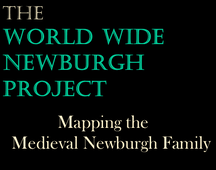Dorset County in the United Kingdom was one of the first medieval strongholds of the Newburgh family. The Dorset family was descended from the cadet lines of the earls of Warwick. Henry Beaumont was the first earl of Warwick installed by William Rufus in 1088. He chose to be known as "Newburgh" after the castle where he was born in Normandy.
Dorset County is situated on the Jurassic Coast. Lulworth Castle of the 12th century was probably a defensive motte and bailey. Though no physical evidence remains, William of Malmesbury and Leland left description of what they saw in their time frames. Lulworth Cove was frequented by invading armies and pirates. The present day castle stands a mile from the chalk cliffs in a sylvan setting.
An archaeological study of the East Lulworth Castle began in 2010 by the Dorset Castles Research Group. This author was pleased to be a part of the study and research. The goal was to find evidence of the 12th century (motte and bailey) castle mentioned by early historians William of Malmesbury and John Leland. While the survey did not turn up evidence of this early fortress, other interesting information was gleaned.
Hundreds Divisions
Hundreds were ancient divisions of land within the original counties. These could include huge swaths of land and the boundaries down through the centuries seemed to ebb and flow. The hundreds most recognized in Dorset for the Newburghs were Winfrith, Rowbarrow and Hasler. Lulworth was said to have spread from Weymouth to Corfe castle in some gazetteers. The best hundred's map for the 11th century is:
Domesday Book of Dorset, edited by Caroline and Frank Thorn, John Morris, general editor, Phillimore, 1983.
Liberties of Dorset
Liberties were an administrative unit of local government in England from the Middle Ages to the 19th century, co-existing with the then operative system of hundreds and boroughs but independent of both, generally for reasons of tenure.

